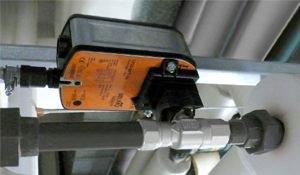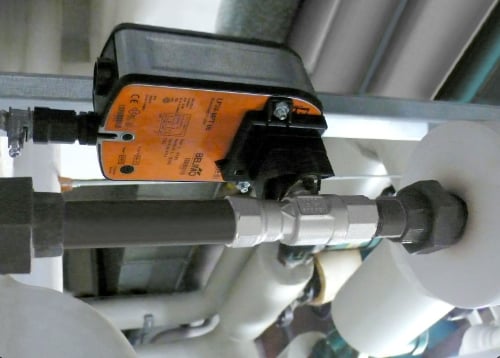The Benefits of Return Side Control Valve Installation
Control valves installed on the return side of hydronic heating and cooling coils are standard in most 2- way valve applications; the reasoning may not be as well known. A major factor behind this standard practice is coil efficiency. The first principle to understand is that the amount of air in the water at a given temperature depends on pressure. If the water pressure is reduced, the air is released. A good way to visualize this phenomenon is by opening a carbonated beverage bottle; the sudden pressure drop allows the entrapped carbonated gas to come out of the solution and quickly dissipate.
A control valve in a closed-loop circuit, Cv, is often calculated with an equal or greater than drop to than the coil. The pressure drop results in air entrapment on the leaving side of the coil. Air acts as an insulator and is a poor heat transfer media. Air-bound coils transfer thermal energy inefficiently and cause noise.
ASHRAE states that "water velocity noise is not caused by water, but by free air, sharp pressure drops, turbulence, or a combination of these, which in turn cause cavitation or flashing of water into steam" (2009 ASHRAE Fundamentals Handbook, Chapter 22). When a control valve is installed on the return side, the water is at a higher pressure through the coil, reducing off-gas, thereby lowering dissolved oxygen content compared to a supply installation. This decreased dissolved oxygen content minimizes air entrapment or free air in the coil and thus the potential for noise.
In a heating application, the water temperature leaving the coil is cooler than the supply temperature. The return side is preferable as it allows the valve and actuator to operate at a reduced temperature which can help protect valve seats and actuator electronics over the installation lifetime.
In a chilled water application, the tempered water of the return reduces the amount of potential condensate on the valve from reaching the actuator. Return side installations may not always be appropriate, as in the case of a 3-way diverting valve- these are commonly installed on the supply and is not critical to proper operation; both locations will work effectively. In supply-side valve applications, the balancing valve should be installed on the return side whenever possible to reduce air and noise problems while achieving more efficient heat transfer.
Common control valve installation diagrams



